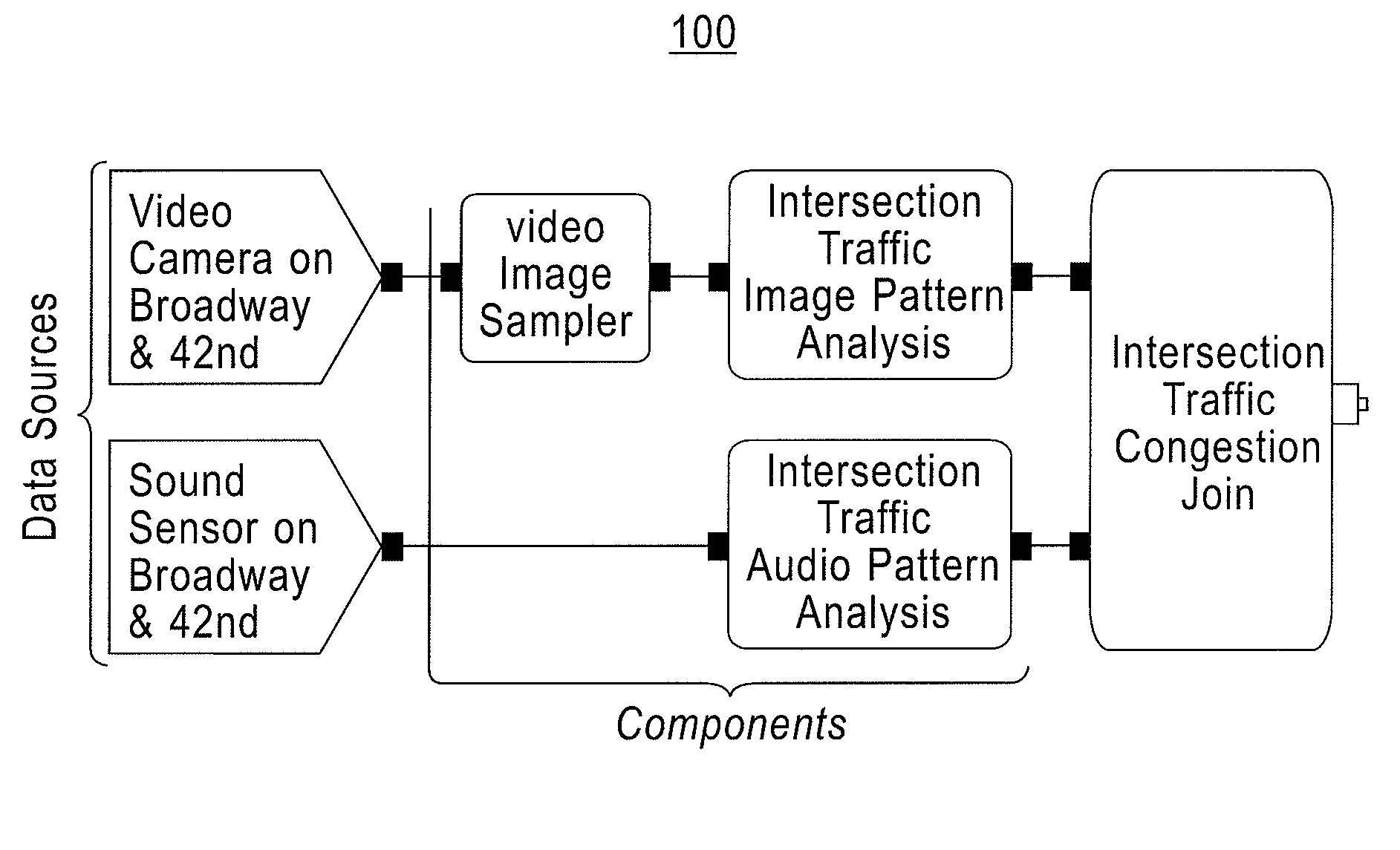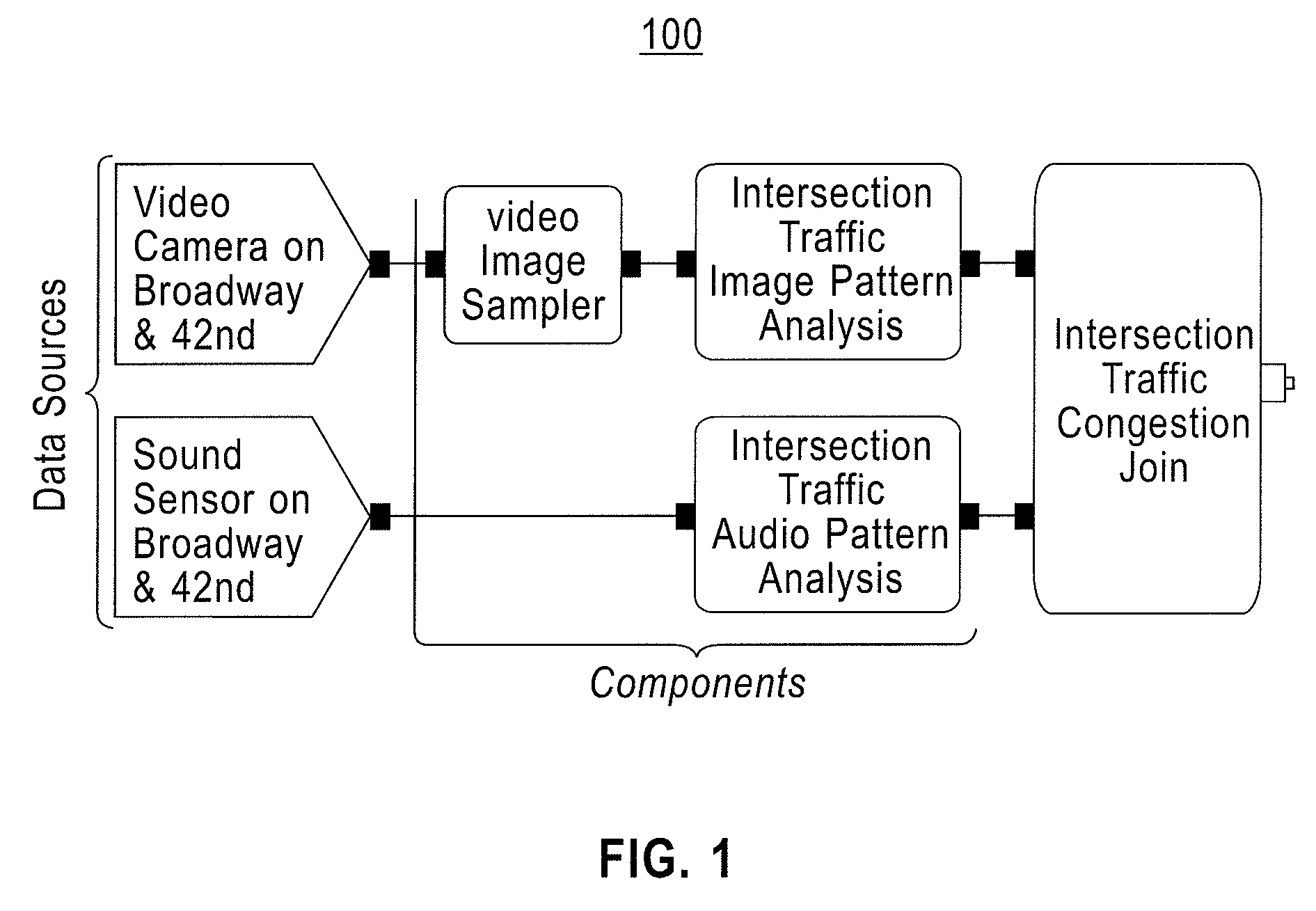Method for modeling components of an information processing application using semantic graph transformations
a technology of information processing application and semantic graph, applied in the direction of program control, requirements analysis, instruments, etc., can solve the problems of imposing high maintenance costs for any new type or variant of information processing outcome, unable to offer sufficient coverage for a wide range of applications, and long development cycle requirements
- Summary
- Abstract
- Description
- Claims
- Application Information
AI Technical Summary
Benefits of technology
Problems solved by technology
Method used
Image
Examples
Embodiment Construction
[0038]In accordance with an exemplary embodiment of the present invention, a method and system for composing processing graphs automatically, and on-the-fly, whenever a processing request is submitted is provided. For automatic composition of these graphs, rich descriptions of different components, descriptions of conditions necessary for incorporation of the components into the processing graph and of states resulting from incorporating the components into the processing graph are needed. In this embodiment, an expressive model for describing these software components based on semantic graph transformations is used. The applicability conditions and inclusion effects for these components are described using resource description framework (RDF) graph patterns. These graph patterns describe states of the processing graph during assembly, conditions necessary for inclusion of the components into the graph and effects of including the components into the graph. In addition, the terms us...
PUM
 Login to View More
Login to View More Abstract
Description
Claims
Application Information
 Login to View More
Login to View More - R&D
- Intellectual Property
- Life Sciences
- Materials
- Tech Scout
- Unparalleled Data Quality
- Higher Quality Content
- 60% Fewer Hallucinations
Browse by: Latest US Patents, China's latest patents, Technical Efficacy Thesaurus, Application Domain, Technology Topic, Popular Technical Reports.
© 2025 PatSnap. All rights reserved.Legal|Privacy policy|Modern Slavery Act Transparency Statement|Sitemap|About US| Contact US: help@patsnap.com



